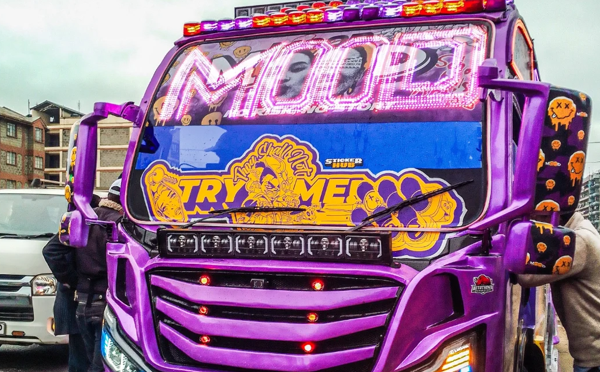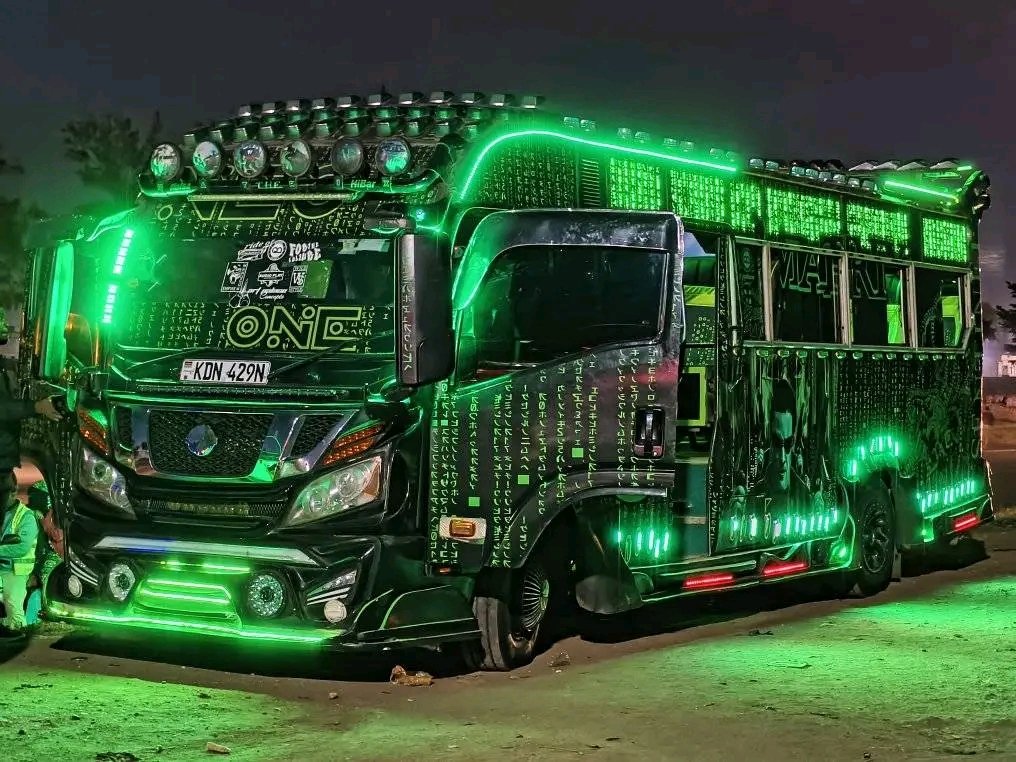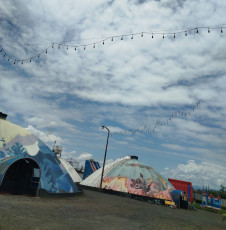- For years, matatus have been more than transport. They are a lifestyle. Most of them are designed with eye-catching graffiti, portraits of celebrities like Tupac or Wizkid, or local heroes, and feature themes such as cartoons, politics, or pop culture. Inside, the party continues with booming speakers, plasma screens, and even Wi-Fi.
Step into a matatu in Nairobi, and you’ve entered more than just a bus—you’ve stepped into a moving club, a street museum, and sometimes, a money-making machine.
Kenya’s matatu culture is like no other in the world. From the loud bass music to wild graffiti, flashy lights, and witty slogans, these minibuses have become a symbol of creativity, hustle, and urban life.
For years, matatus have been more than transport. They are a lifestyle. Most of them are designed with eye-catching graffiti, portraits of celebrities like Tupac or Wizkid, or local heroes, and feature themes such as cartoons, politics, or pop culture. Inside, the party continues with booming speakers, plasma screens, and even Wi-Fi.
One of the latest stars of this culture is Mood—a luxury matatu recently launched by George Ruto, the son of President William Ruto.
Mood is not your average nganya. It costs approximately KSh 14 million to build and comes with a DJ booth, bucket seats with cup holders, LED lights, and two giant TV screens.

It’s solar-powered and fully air-conditioned, showcasing just how far the matatu industry has progressed. The matatu was launched in a grand event at the KICC and has already become a fan favourite on the Embakasi route.
Behind the glam is a business machine. Most flashy matatus charge more than regular ones—anywhere from KSh 100 to KSh 250 per trip depending on the route, time, and hype.
If a matatu makes around 10 trips a day with 25 passengers each time, that’s about KSh 50,000 to KSh 60,000 daily. Subtract fuel, crew pay, and repairs, and the owner still walks away with solid profits—especially when the matatu becomes a hot brand.
Matatu culture is now being recognised globally for its vibrancy. It blends Kenyan music, street slang, art, fashion, and youth energy. Tourists are often fascinated by the creativity and boldness they see in these vehicles. It’s raw, loud, and unfiltered—and that’s precisely the point.
However, in a new directive dated May 27, 2025, the National Transport and Safety Authority (NTSA) demanded a complete clean-up of the matatu industry.
Operators must remove all graffiti, remove unauthorized lighting, and cover up any branding that overshadows the Sacco or company name under which the vehicle is licensed. All decorations painted or pasted on windows windshields, or vehicle lights must also go.
According to NTSA, many matatus have modified their bodies so heavily that you can’t tell who owns them or which route they serve. Worse, they say the wild decorations and tinted windows make law enforcement, safety inspections, and passenger security nearly impossible.
The Authority has also warned operators against playing loud music, insisting that volume levels must adhere to official guidelines.
While the move is aimed at improving safety, transparency, and law enforcement, it has sparked backlash from artists, youth, and matatu operators who say the culture fuels jobs, creativity, and national pride.
As high-end matatus like George Ruto’s Mood push the boundaries of innovation and style, the question remains: can Kenya strike a balance between regulation and culture—or will one have to give way for the other?












